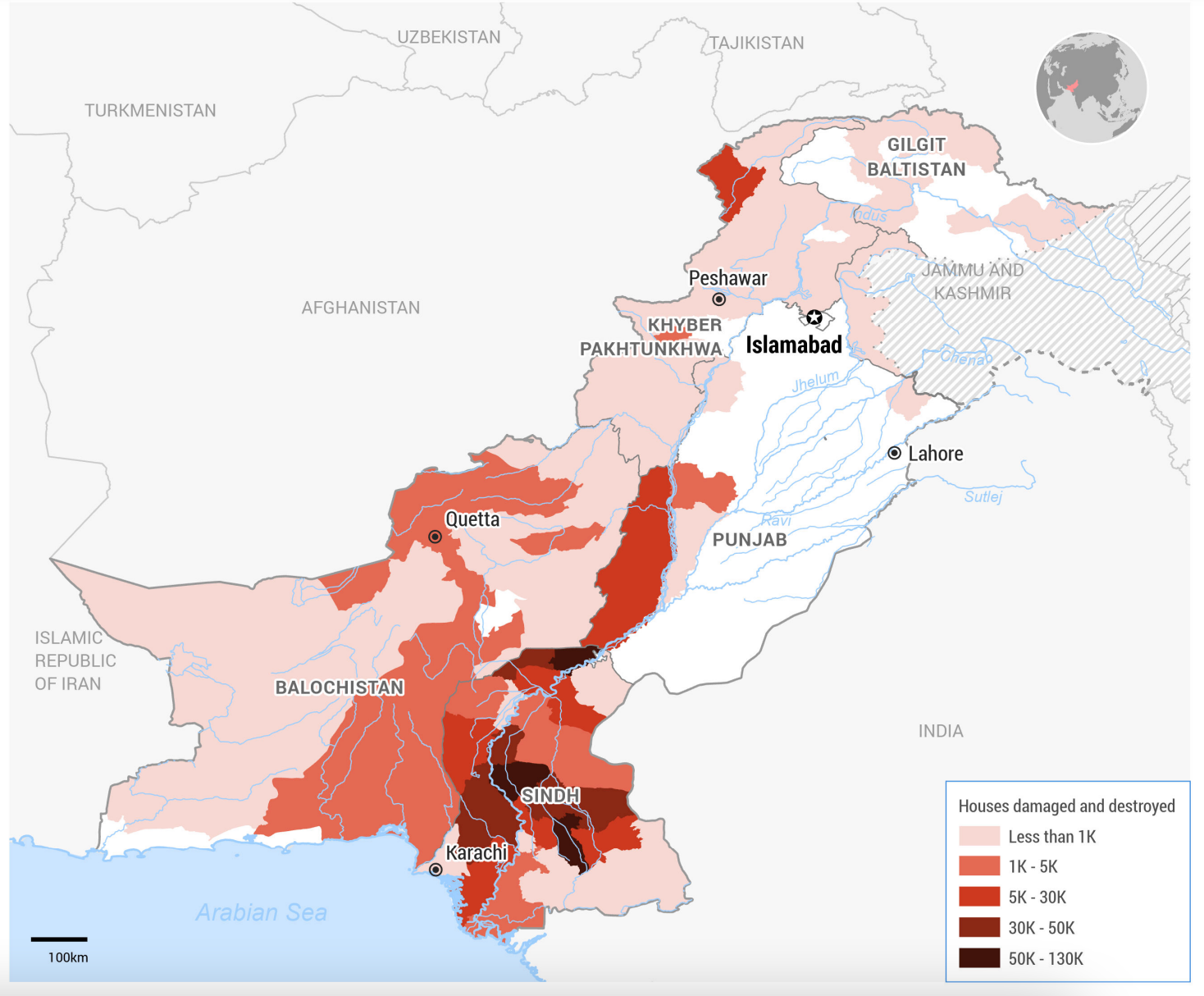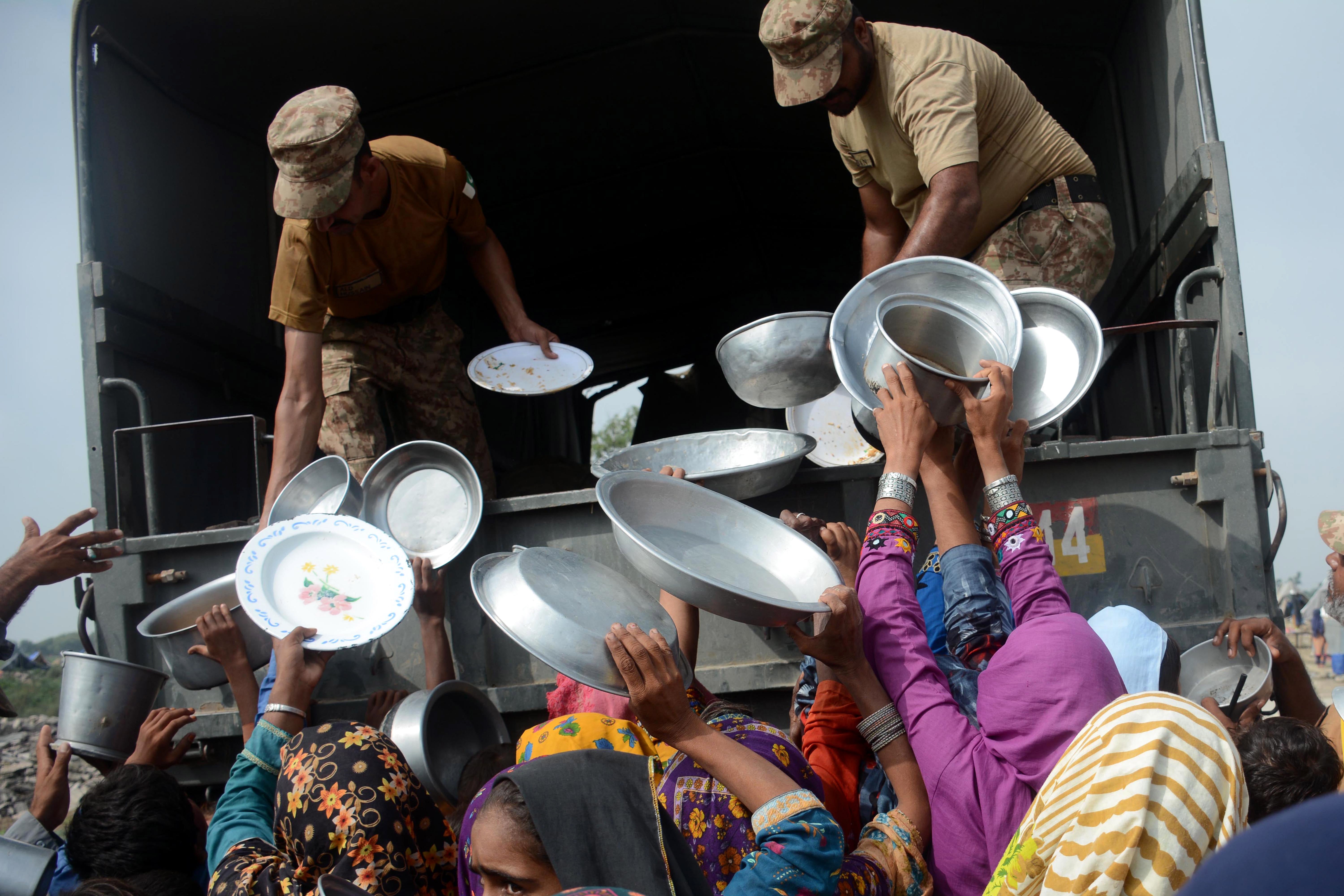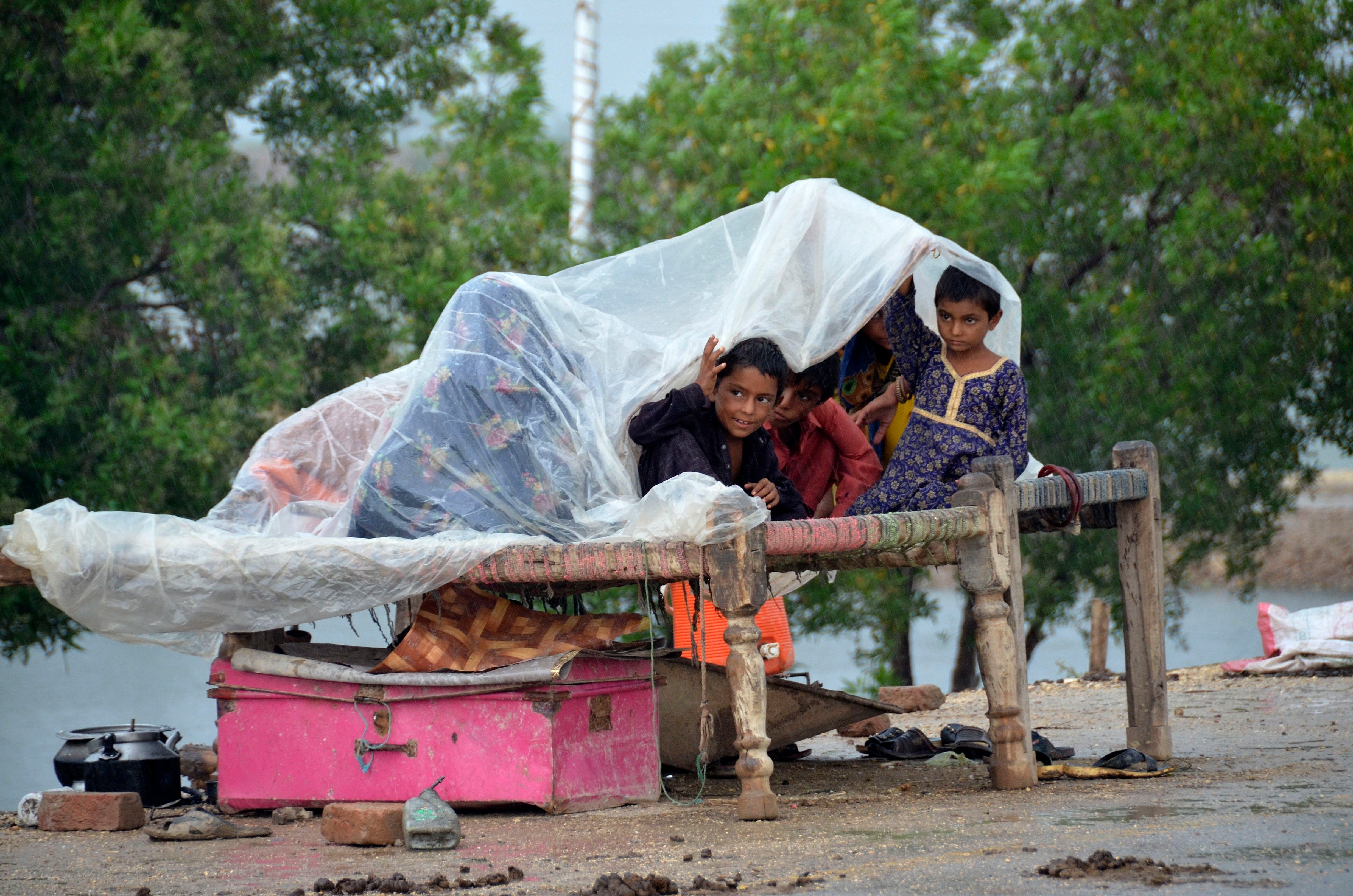Pakistan floods: Map shows extent of devastation as climate minister says ‘third of country under water’
Unprecedented floods have impacted nearly 33 million people and are almost certainly made worse by climate crisis
Your support helps us to tell the story
From reproductive rights to climate change to Big Tech, The Independent is on the ground when the story is developing. Whether it's investigating the financials of Elon Musk's pro-Trump PAC or producing our latest documentary, 'The A Word', which shines a light on the American women fighting for reproductive rights, we know how important it is to parse out the facts from the messaging.
At such a critical moment in US history, we need reporters on the ground. Your donation allows us to keep sending journalists to speak to both sides of the story.
The Independent is trusted by Americans across the entire political spectrum. And unlike many other quality news outlets, we choose not to lock Americans out of our reporting and analysis with paywalls. We believe quality journalism should be available to everyone, paid for by those who can afford it.
Your support makes all the difference.At least 119 people have died in the last 24 hours alone due to flooding in Pakistan, taking the overall toll to over 1,000 since June, as the country’s climate minister says a third of the country could be underwater.
Multiple cycles of torrential rains have hit many parts of the country since mid-June, with the government saying flooding has affected nearly 33 million people – almost 15 per cent of the population.
A national emergency has now been declared and the government has deployed the army to help the local administration cope in several provinces.
Foreign minister Bilawal Bhutto-Zardari said on Sunday night that floods brought on by weeks of extreme monsoonal rainfall and melting glaciers would worsen Pakistan’s already dire economic situation and that financial aid was needed.
“Going forward, I would expect not only the International Monetary Fund, but the international community and international agencies to truly grasp the level of devastation,” he said.
“I haven’t seen destruction of this scale, I find it very difficult to put into words ... it is overwhelming,” he said. Many crops that provided much of the population’s livelihoods had been wiped out, he added.
“Obviously this will have an effect on the overall economic situation,” he said.
Pakistan’s climate minister Sherry Rehman has that one-third of the country could be underwater by the time this year’s “monster monsoon” recedes.
Where has the flooding hit?

The state-run Pakistan Television reported that the latest flooding displaced thousands of people in the northwestern Khyber Pakhtunkhwa, southwestern Balochistan and southern Sindh provinces.
Meteorologists say these provinces have received around four times the 30-year average expected rainfall during this period. Local news agencies reported that on Saturday, six more dams burst their banks in different parts of Balochistan, submerging dozens of villages and farmlands.
Information minister Maryam Aurangzeb said soldiers and rescue organisations were helping people to reach safety in these provinces as well as in eastern Punjab.
“[The] government has sanctioned sufficient funds to financially compensate the affected people and we will not leave our people alone in this tough time,” she said.
The Anadolu agency reported that the southwestern Chaman border crossing between Pakistan and Afghanistan remained closed due to heavy rains and flooding.
What is the death toll?
The toll since June has reached 1,033 with 119 people dying in the last 24 hours, the National Disaster Management Authority (NDMA) said on Sunday.

The disaster management authority said that the most fatalities were reported in Khyber Pakhtunkhwa, followed by Sindh and Balochistan.
The ongoing monsoon and the floods have impacted at least 30 million Pakistanis across the country and left many thousands of others without shelter, electricity or gas. More than 600,000 homes have been destroyed.
What is being done to help?
Pakistan’s minister of climate change, Sherry Rehman, wrote on Twitter earlier this week that the local authorities were unable to help people on their own and appealed to the world community for support.
Local TV coverage has included reports of people in extreme distress, with families wading through waist-high water, holding on to their children and carrying essential items on their heads.
In several places, school buildings have been converted into shelters for the displaced.
The United Nations foreign affairs spokesperson, Asim Iftikhar, said a UN flash appeal would be launched on Tuesday “simultaneously from Geneva and Islamabad”. He said the appeal was “significant, and it would trigger the international community’s response as well as bilateral assistance from other countries”.
Several countries, including Qatar and Iran, pledged emergency support in the wake of a deluge described as a “humanitarian disaster of epic proportions”.
On Monday, cargo ships carrying aid started reaching Pakistan from Turkey, Qatar and the United Arab Emirates in a rush to assist the impoverished nation.
Last week, the UN in a statement said it allocated $3m for UN aid agencies and their partners in Pakistan to respond to the floods and this money will be used for health, nutrition, food security and water and sanitation services in flood-affected areas, focusing on the most vulnerable.
Prime minister Shehbaz Sharif has cut short a visit to Qatar and wrote on Saturday on Twitter that he would be “visiting flood-affected areas and meeting people”.

“The magnitude of the calamity is bigger than estimated,” he said. “Times demand that we come together as one nation to support our people facing this calamity. Let us rise above our differences & stand by our people who need us today.”
Mr Sharif said the scope of the devastation caused by the floods was worse than in 2010, when heavy rainfall killed 1,700 people in Pakistan. He blamed the “horrors of climate change” for the tragedy.
Pakistan is one of the most vulnerable countries to the climate crisis and faces rates of warming considerably above the global average. Meanwhile, the entire south Asian region faces a series of extreme weather events with deadly heatwaves hitting India and Pakistan earlier this year and floods devastating Bangladesh and Afghanistan.
“In recent decades, we never witnessed such an unusual heavier downpour in Pakistan,” scientist Shahla Gondal told the Associated Press this week, adding that Pakistan’s authorities are “ill-equipped and do not know how to tackle the disaster”.
While the UN appeal is awaited, Pakistan’s Dawn newspaper has started a fundraiser for the flood victims.




Join our commenting forum
Join thought-provoking conversations, follow other Independent readers and see their replies
Comments